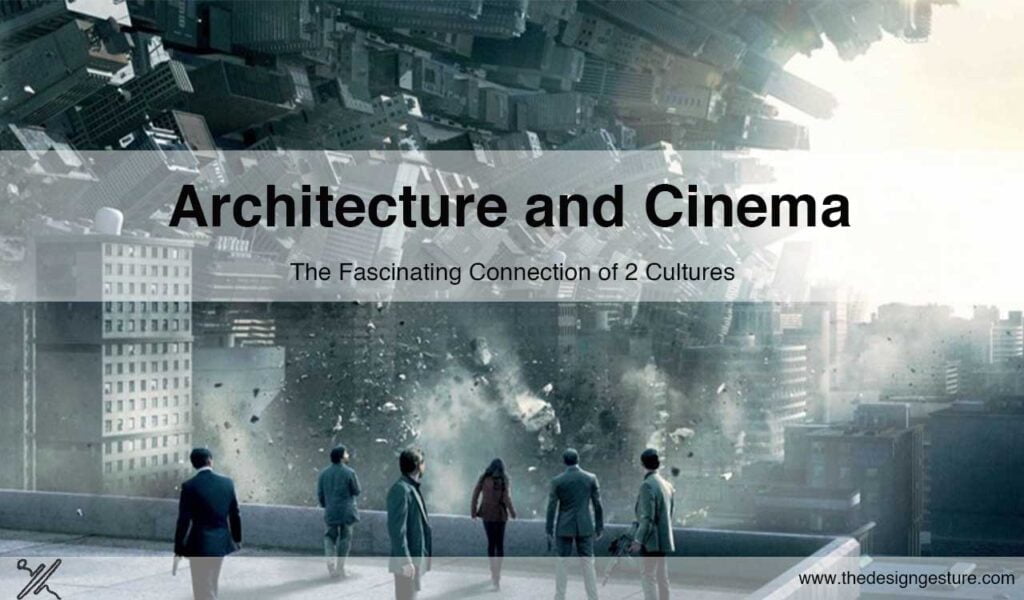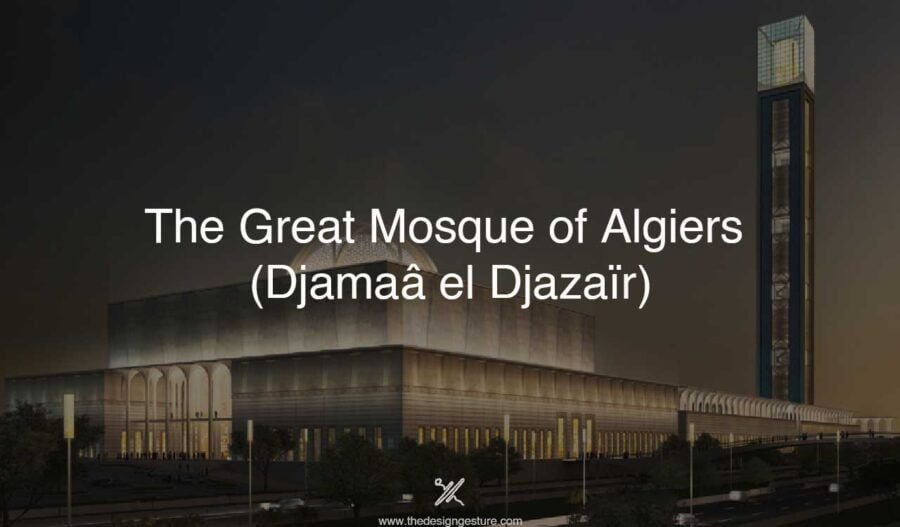Since the dawn of cinema, film, and architecture have been inextricably linked. Both mediums are cultural expressions that deal with space, time, and people, and they use spatial narrative to address the human predicament. The architect, like the director, is in charge of turning fiction into reality. The built environment and the atmosphere it creates play an important role in visual storytelling, from modernist dwellings to futuristic landscapes.
Table of Contents
Set construction
Set creation is unquestionably one of these crossroads. Sets erected in closed studios allow for greater control over shooting settings, eliminating limits like weather, lighting, and other impediments that can arise when shooting in “real” environments. Alfred Hitchcock is an example of a filmmaker who made considerable use of sets in his films to create environments of suspense and dread.
German expressionism is another iconic example of the usage of sets in the film. Spaces and surroundings in films like Friedrich Wilhelm Murnau’s The Cabinet of Dr. Caligari (1920) and Robert Wiene’s Nosferatu (1922), according to Pallasmaa, portray a “fantastic architecture suspended between dreaming and reality.” The architecture in Wiene’s film Nosferatu is utterly deformed, with oblique angles and pronounced shadows on the setting’s surfaces, presenting the building as something out of touch with reality. The scenography in Nosferatu replicates genuine constructions, yet the film’s narrative imbues these locations with a dreamy ambiance.
Metropolis (1927)
The visuals of Metropolis are so breathtaking that everything else in the film fades into the background, allowing the film’s mythological status to take centre stage. The stunning, cutting-edge visual effects and futurist vision of the 1927 film have become enormously iconographic, and the film has set a standard of influence in science-fiction movies.
It features a cloud-scraping contemporary Tower of Babel, an industrial workers’ production hellhole, and super-modern, master-of-the-universe-style offices, all of which represent the designers’ extensive understanding of the most recent European architectural advances. Whether regarded as Art déco, Bauhaus Modern, or Expressionism, all the structures on exhibit are terrifying. The overall effect is strangely Gothic, gloomy, long, and chiaroscuro. It’s also a little scary.
Mon Oncle (1958)
For urbanists—or former urbanists—interested in the link between suburban and urban life, this film is a must-see. Villa Arpel, a modernist single-family home, is owned by a couple (the protagonist’s sister- and brother-in-law) who firmly adhere to gender norms and the ideal normal family. “Les lignes géométriques ne rendent pas les gens aimables,” Tati, who directed, produced, and starred in the picture, adds that the modern architecture was chosen to help the spectator comprehend the suburban family’s identity, saying: “Les lignes géométriques ne rendent pas les gens aimables.”
Goldfinger (Guy Hamilton, 1964)
Films can be used to critique architecture. The design of the Bond villains’ lairs reveals Ian Fleming’s distaste for modern architecture. The materials and mood of Arch-baddie Goldfinger’s Rumpus chamber significantly resemble Frank Lloyd Wright’s work. What about the title? An ostensible spoof of Ern Goldfinger, the building’s namesake architect. James Bond’s proclivity for destroying iconic modernist sculptures may be interpreted as an extreme form of criticism, mocking the designers’ perceived pomposity. It demonstrates how cinematic architecture can speak to more than just the world of the film.
Blade Runner (Ridley Scott, 1982)
Films frequently feature dystopic images. Ridley Scott’s Blade Runner, set in 2019 San Angeles, a futuristic, post-industrialist city, is an excellent example. The film is a critique of the past and present, as well as a clear manifestation of the worries engendered by this new urban condition, as are all fine sci-fi productions. It serves as a cautionary tale about population growth, urban development, and unfettered capitalism. Frank Lloyd Wright’s blocky, Mayan-influenced Ennis House in Los Angeles serves as the appropriate, dark backdrop for the protagonist’s residence.
Waterworld (1995)
Waterworld does not appear to have any “genuine” architecture. It is undoubtedly impossible to locate a structure in the film’s virtually entirely aquatic setting. Many designers, on the other hand, understand that world-building is a vital aspect of design, particularly as climate change means that structures and cities will soon have a new connection with water. Even though it has a bad reputation, this film is a must-see for architects because of its unusual water vehicles and water developments.
The Matrix (1999)
Among the breath-taking vistas and action sequences, this future fantasy film gives architectural styles and architecture a lot of attention. The Wachoski brothers’ meticulous attention to detail was evident in their most recent film, Jupiter Ascending. Surprisingly, The Matrix has many real-world structures in addition to the fictional virtual reality cities.
The Mega City, an enormous virtual city in which the residents of the Matrix live, is the most significant architectural aspect in the film. A mega city is a merger of several cities fused into a single huge city with a massive downtown and a striking skyline.
The city was created to look like a mash-up of major cities in the US and Australia in the 1990s, with dreary and utilitarian sections interspersed with little pockets of color and entertainment. Sydney (where the majority of the film was shot), Oakland (where parts of the vehicle chase sequences in The Matrix Reloaded were filmed), and Chicago were all used as inspiration for the Mega City (the birthplace of The Wachowskis).
Inception (2010)
Since the film’s premiere in 2010, the bending city scene has influenced designers and a wide range of other moviegoers. Architecture, according to BIG’s Bjarke Ingels, “should be like the documentary version of Inception.” What is it about this scene that attracts so many designers? Architects are always coming up with fresh ideas for how to shape the city and the world around them. As a result, a scene in which space is entirely unlimited and can be manipulated in any way you can imagine—and a film that can portray that move—is bound to elicit creative thinking.
Her (2013)
The city and apparel design created a plausible futuristic setting, even if it was only in the background. Men were spotted wearing high-waisted pants that were not dissimilar to what is worn in the office now. Public areas are large, open spaces with contemporary furniture, and transit places appear to be cleaner and more efficient. Furthermore, future technology has a constant influence on architecture. For all of these reasons, Her is an excellent picture for stimulating discussion on the future of cities and technology.
Ex Machina (Alex Garland, 2014)
The stunning natural beauty of green Norway is juxtaposed with the austere materiality of the imaginary, almost oppressively minimalist mansion that is home to one of the protagonists, Nathan. The difference is a reflection of the human-machine connection. The house becomes the fifth presence in this film with only four actors. The labyrinthine house, as symbolized by Caleb (one of the four protagonists), offers an important depth to the plot. It emphasizes the significance of architecture in film.
The Grand Budapest Hotel (2014)
The Grand Budapest Hotel is a magnificent film about place, memory, and how building can preserve the values of a bygone period.
The film progresses via a succession of nested storylines, inspired by Stefan Zweig’s writings and his nostalgic image of early twentieth-century Vienna. The Grand Budapest Hotel, a pink and cream manor set on a mountaintop and accessible by funicular, is an oasis of refinement in the face of gloomy political forces mounting in the neighborhood. This is largely to the meticulous efforts of master concierge Monsieur Gustave, played by Ralph Fiennes, who proudly and deftly handles the hotel’s operations.
While the most of the film takes place before the war, a few scenes are set in the 1960s, when the furnishings have turned drab and the outside has been coated in raw concrete. All the delicacy and whimsy have vanished as modern preferences have shifted toward the new regime’s utilitarian and (implicitly) socialist beliefs.
Black Panther (Ryan Coogler, 2018)
This is a visually amazing film that contains a completely formed environment. Wakanda has deservedly earned a position on this list. It is frequently touted as an inspiration for futuristic African cities in the works, such as Akon City. It’s also relevant to architects because of the film’s technological innovation, which is largely enabled by the mythical metal vibranium, which arrived in Wakanda via a meteorite that landed long before the city was built. Wakanda may provide inspiration for building with new resources as we reach a new era of material innovation.
Buckingham Palace, the home of the Queen of England and the former centre of British colonial power, served as inspiration for the Black Panther’s palace. The rationale for this decision was essentially pragmatic. Every location is a circle that aids in relaxation and serenity. It also symbolizes our ongoing journey–the life cycle of birth, life, and death, which has many expressions across the continent.
Parasite (Bong Joon Ho, 2019)
In Parasite, the architecture serves as a metaphor for artist Bong Joon Ho’s explanation of inequality in Korea. It emphasizes the importance of our built environment as a reflection of society. The film speaks the language of architecture presented through contrasts, from the Kims’ banjiha (lower-ground apartments in Korean) to the Parks’ beautiful residence. The disparities in socioeconomic classes are expressed through interior and exterior spaces, design and chaos, solids and voids, and solids and voids. Everything is understood through the construction of space because the plot is set in these houses. The set-up exemplifies how important architecture is in cinema and visual storytelling.
The film Parasite is an example of a film in which architecture plays a role. Symbolic design moves in the actual area they share hint to their relationship. Many designers understand the importance of vertical levels in establishing hierarchy in a project. It’s never been more apparent than in this film since 2020. In a way that is nearly impossible to express, the precisely filmed scenes show power and classicism through simple architectural motions.
Malcolm & Marie (Sam Levinson, 2021)
The project, which was conceived during the pandemic, featured a small staff, all of whom had previously worked on the “Euphoria” team. The picture, which was shot in chronological sequence and is beautifully produced in 35mm black-and-white, takes place in a single location. The D.P. was heavily involved in the selection of the home, a modern, glass-walled structure in Carmel, Calif., created by architect Jonathan Feldman and known as the Caterpillar House, in order to establish a dynamic visual language with few elements.
The Psychological Consequences of Seeing Cities Destroyed in Cinema
New York City, as well as other cities throughout the world, such as Los Angeles, Tokyo, London, and Paris, are being destroyed for our entertainment. “The Day After Tomorrow” isn’t the first time the Big Apple has been devastated, and it certainly won’t be the last. We enjoy witnessing a city and its landmarks being destroyed, whether it’s because of a natural disaster, meteor attack, alien invasion, or a takeover by a massive, unstoppable creature. As we see the worst-case scenarios unfold on screen, we envisage a world where our greatest risks seem overblown and practically impossible—but there’s always the nagging question of “what if?” that makes us crave this genre of cinema.
So, why do we enjoy watching cities burn? The solution is based on psychological concepts first proposed by Sigmund Freud, who discovered that watching your darkest nightmares come true hypothetically gives you a little sense of pleasure. Repetition of visions of tsunami devastating cities, aliens invading our planet, and other disastrous occurrences strengthen our mind’s ability to control the imaginative components of these events.
Often, the underlying idea of social criticism and commentary in dystopian films is to give us an exaggerated warning that if we don’t act, something bad will happen. It adds a feeling of fantasy to real-life threats.




